- Administrator
- Albums and Singles
 Stefan Knappe's (Maeror Tri, Troum) new label, Substantia Innominata, has released three 10" records, two of them this year. Asianova's creeping, dark drones occupy this particular limited run of pink, red, and white marble vinyl. The music is deep and cavernous, resonating in giant swirls and bringing to mind the most unusual and supernatural of ghost stories.
Stefan Knappe's (Maeror Tri, Troum) new label, Substantia Innominata, has released three 10" records, two of them this year. Asianova's creeping, dark drones occupy this particular limited run of pink, red, and white marble vinyl. The music is deep and cavernous, resonating in giant swirls and bringing to mind the most unusual and supernatural of ghost stories.
Substantia Innominata
Drone Records have always released high quality music with the greatest of care and Knappe's new label, which focuses only on 10" releases, continues that tradition of care and excellence. Asianova consists of Ure Thrall (from Voice of Eye) and Pamela Passmore; this album also includes guest musicians Paul Valsecchi and Marlon Porter. I was happy to see that this quartet got right to the point on their sleeve. Without a doubt Asianova seeks to "create music about the intangible" and to connect the external world with the internal world in a meaningful way. This may seem like an ambitious project, but I've always been of the opinion that music, especially drone and rather non-temporal or anti- temporal music, is capable of exactly this.
The title might mean something like "book of ultra-memory" or "record of high memory" and the washes of rattles, chimes, and low tones that flow out of the speakers certainly sound ancient, informed by a universal memory of the cosmos and the stars. The artwork includes celestial references, further suggesting that the group is trying to bring the universe home to us, or perhaps us home to the universe. Some songs, though they flow into each other on both sides, feature of a heavy emphasis on percussion with synthetic waves groaning over heavily distorted and washed out beats, all of them focused almost entirely on the bass end of the spectrum. Vocals light up the music at various points, though those points are thematically grim sounding and brief. Each side makes sense as a whole, though they start in similar ways. The "Mnemo" side, however, grows in stature much more quickly than the "Magna" side, sounding off with insectoid horns and reversed vocals. The effect is haunting and relaxing simultaneously. Asianova have a tendency to quickly bring new sounds and surprises into their music quickly and without warning, keeping me from calling this album relaxing altogether. There is a palatable tension in the air and the play of deep, low sounds and other effects keeps the record moving at a pace that seems to stop time: the record is over before I know it.
The record has been spinning on the player for three straight rotations, now, and I'm still picking up small nuances the group has buried in their music. There's plenty to hear on this disc and furthermore the entire package is so well defined and so immaculately thought out that I can't help but fall in love with it. Perhaps this is music with a purpose, music not designed solely for entertainment, but that doesn't confine it to purely academic or purely meditative music. It's enjoyable on an aesthetic level, but the personal and spiritual material it brings to the table is the main course that draws me in the most.
Read More
- Administrator
- Albums and Singles
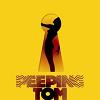 After years of living as a rumour, Mike Patton has finally unleashed his Peeping Tom project. Firmly rooted in hip hop and overcrowded with special guests, the first of two planned albums is disappointingly average. The album has its peaks and troughs; granted the highs are high indeed but too much of the disc is kooky hip hop by numbers.
After years of living as a rumour, Mike Patton has finally unleashed his Peeping Tom project. Firmly rooted in hip hop and overcrowded with special guests, the first of two planned albums is disappointingly average. The album has its peaks and troughs; granted the highs are high indeed but too much of the disc is kooky hip hop by numbers.
When I first heard the Peeping Tom album I thought it was great. I listened to it several times in a row, marvelling at how Patton had nailed what good pop should be. I then took a break from listening to it for a few weeks and when I went back it had lost a lot of its sheen. So Patton hasn’t quite nailed perfect pop, it should get a listener involved every time. Most of the songs are average with moments of brilliance. For example on “Don’t Even Trip” there is little of interest throughout the song, the music is passable but the vocals are dull apart from the superb chorus (which starts with a lyric that has Patton written all over it: “I know that assholes grow on trees but I’m here to trim the leaves”).
“Five Seconds” is a strong and promising start to the album. The music is groovy and instantly accessible (not a quality much of his music has possessed). Patton’s singing is user friendly but peppered with a few curveballs to keep me on my toes. It’s nowhere near his best work but as a pop song it works, if more songs sounded like this on the radio I might consider turning the damn thing on. Unfortunately they don’t sound like this and even the rest of the album doesn’t keep to the same level of quality. For every decent song like “Your Neighborhood Spaceman” and “Kill the DJ” there is a “Getaway” and a “Caipirinha.” Apparently Patton has enough Peeping Tom to make two albums but he would have been better making one album using the best of both (provided there are more good songs among those not yet released).
I don’t know what I was expecting Peeping Tom to sound like but I was expecting better after the amount of time that has gone into bringing it about. I know it wasn’t meant to be challenging like Fantomas but I thought it might be less middle of the road. Guests like Kool Keith who I expected to bring a lot to the table were a disappointment. On the other hand, Patton has teased out some good sounds from Massive Attack (who gave up being interesting a long time ago).
When the album finishes with “We’re Not Alone” I am reminded of why I like Mike Patton. I like the vocal gymnastics and sense of adventure that many of his other projects are full of. Ironically these qualities are absent from this last song (and much of the album), it is more in the vain of Faith No More who were boring and far too safe. I hope once Patton gets this return to mediocrity out of his system and comes back with something new to blow me away.
Read More
- Scott Mckeating
- Albums and Singles
Described by the label itself a “live goof nonsense”, this is a mixture of travelogue, unintentional stand-up and sound check banter. But where last year’s Live at East Banfields Wolf Eyes release was spoken word comedy, this mixes up that formula with musical interludes.
These pieces aren’t mini-disc leftover jams either, they are prime cuts from (I believe) Wolf Eyes, John Olson and Graveyards; it’s these tracks that makes this CD-R worth trawling the net for. Recorded in and around, and on the way into Delaware, the non-musical parts aren’t exactly essential, but stir a few laughs past a handful of listens. The Cockerel-in-studio shenanigans of “Four” or “Six”s odd hybrid of melancholy piano piece and The Police are obviously the exceptions to this rule.
The six minute “Two” takes shredded power electronics to the point where you can hear holes being bored into the floor of the venue. Spilling spools of corrupted magnetic tape from their battered suitcases, riffs are spat out and brutally wronged in front of the audience.
At 20 minutes long the closer casts a low long shadowy silhouette over Del-War Showdown’s comedy moments. This hollow shelled monster of a track flickers down the slow burning fuse, a rotating rasp whining and grinding taking hold of the low end. This piece shifts into something more in line with the UK underground, like a freshly dug-up psych side, its long drawn melodies floating away lazily. The whole shebang ends in an audience screaming themselves ill; Delaware sounds like a pretty wild place.
Read More
- Lucas Schleicher
- Albums and Singles
Matt Waldron and Allan Zane should have talked about making these two songs available as MP3 downloads. They're both slices of strange and organic noise that I've come to love, but I'm not sure they needed a limited run 12" and 7" record to themselves. The limited run has long been sold out; it was only 33 copies large and featured limited edition artwork from Matt Waldron and is also signed. The standard edition features printed artwork and the same two songs, but isn't signed. There's absolutely no need to press an extra 300 copies of this release when both songs could've been made available for download. The songs are both interesting, but I'm not sure how often I'd put them on just to hear them.
It's not that I think the songs aren't worthy of a physical format like vinyl, but digital media would serve both these songs much better. They're brief compared to the typical Irr. App. (Ext.) composition and their relation is tangential at best. The printed artwork is nice, but could easily be downloaded. As far as the music itself is concerned, it's hard to determine exactly how "Hypothetical Tardigrade Resurrection #1" is related to the other songs of the same name from Waldron's Perekluchenie album and Wyrm's work, which I'm mostly unfamiliar with, is entirely unlike anything I've heard from Irr. App. (Ext.). Wyrm, made up of Zane, Terry Stalcup, John Murphy, and Kensaku Nishizato (who appeared on Nurse with Wound's An Awkward Pause) has a metallic focus that brought Organum to mind almost immediately. Their work, however, slowly becomes more distinct with the addition of other textures, like alarm clocks, bells, cricket-like noise, voices, and brushes. "Labyrinth Defector" is very involved composition featuring layers of sound, but I'm not sure I'd be tempted to put this on the record player just to hear it.
Had these been made available in a digital format, I think they'd find their way into my play lists, but as it stands I think I'll be putting on full-length recordings from both these bands, instead.
Read More
- Administrator
- Albums and Singles
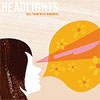 Last fall, when I was listening to the Headlights’ EP persistently, I saw that they were playing a bunch of shows in the Boston area. I didn’t make it to any of them. This was part laziness and part befuddlement. My irrationality aside, I am kicking myself presently because Headlights’ full-length Kill Them With Kindness explains how an unassuming band which plays obscure shows can conjure a remarkable album’s worth of pleasant indie-pop rockers and ballads, the perfect arrangement for a any high school or basement show despite its numbers and ages.
Last fall, when I was listening to the Headlights’ EP persistently, I saw that they were playing a bunch of shows in the Boston area. I didn’t make it to any of them. This was part laziness and part befuddlement. My irrationality aside, I am kicking myself presently because Headlights’ full-length Kill Them With Kindness explains how an unassuming band which plays obscure shows can conjure a remarkable album’s worth of pleasant indie-pop rockers and ballads, the perfect arrangement for a any high school or basement show despite its numbers and ages.
The pseudo-baroque orchestral opening to “Your Old Street” confused me until I heard the nudity of the song’s stark opening; chamber pop gives way to just Tristan Wraight’s and Erin Fein’s vocals with a soft bed of strings and brushed percussion. It takes over two minutes before the signature chirpiness of Headlights shows up. The contrast between the prelude and the song’s core is the essence of the band. They throw sounds off the wall and bounce them around to recombine with more conventional pop standards. Once again, the results seemingly work, but I don’t know why. It just sounds good. Fein’s playful vocals run up and down throughout the song, radiating little lyrical flourishes and subtleties. It could take a few listens to understand their impact. But it’s all just prolegomena to the anthemic centerpiece of the album. “TV,” as I have intimated before, is two and a half minutes of perfected pop. The crescendoing vocal energy grows beyond measure; it plateaus three-quarters through only to pick up momentum at the very end. The song is all about timing, the same way that its titular subject is. Consider the Law & Order syndication phenomenon with which everyone will be familiar: when A&E still had the syndication rights to Law & Order, they would play two back to back episodes (three times a day), allowing the first to finish entirely, credits and all, before starting the next.
Now, by splitting the screen into two halves, TNT (which admittedly shows more episodes per day) enjambs the start of the subsequent episode under the credit titles of the previous episode. The whole effect of the timing is rushed, squinty, and wrong. Headlights offer a more A&E approach to their music, an antithesis to the TNT economy. Each note, each song is justly rounded off and completed before going on to the next. Songs or notes can be fast and efficient, but they never impinge or intercede. The re-recorded version of “Put Us Back Together Right” cleans up the song from the 7-inch but sounds a little antiseptic for the effort. Still a rousing and fine song, it simply loses a little of the grittiness from the split single (a puff of a labial P-sound here, a yelp there.) The way Fein clips her enunciation of the chorus doesn’t alter the song dramatically but it is just enough to get the sense that the band and/or producer was unnecessarily trying to tighten up the sound for the album. It could be that I just like my indie-pop a little dirty.
The album’s midsection slows down after all the activity of the first three songs. “Lions” feints to pick up the tempo with a short blues-rock-inspired two minutes, but the album actually and ironically reclaims its energy with “Words Make You Tired.” It’s not a prototypical rocker, but the density of the band’s sound here makes you take notice. There are more layers here than a normal Headlights’ song, centered by a pentatonic synthesizer theme which recalls a little of the Magnetic Fields’ “Tokyo A Go-Go.” The album’s end gets even fuzzier with saturated electronics and keyboards. It’s the sound of the future, envisaged from the '80s.
samples:
Read More
- Administrator
- Albums and Singles
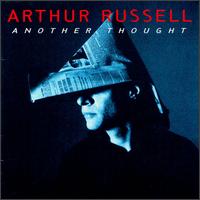 This CD was originally issued on the Point Music label in 1994 to little fanfare, and it quickly went out of print. It was the first posthumous release of the work of Arthur Russell, who died of AIDS in 1992, but significantly pre-figured the resurgence of interest in the artist a decade later. To meet the new demand, it has now been reissued by Philip Glass' Orange Mountain Music label, in an edition nearly identical to the 1992 release. It easily ranks among Russell's best releases, filled with memorable, idiosyncratic songs drawn from the Russell's vast private tape archives.
This CD was originally issued on the Point Music label in 1994 to little fanfare, and it quickly went out of print. It was the first posthumous release of the work of Arthur Russell, who died of AIDS in 1992, but significantly pre-figured the resurgence of interest in the artist a decade later. To meet the new demand, it has now been reissued by Philip Glass' Orange Mountain Music label, in an edition nearly identical to the 1992 release. It easily ranks among Russell's best releases, filled with memorable, idiosyncratic songs drawn from the Russell's vast private tape archives.Although Another Thought is not a finished album per se, but rather a collection of some of the best bits from Russell's archive of unreleased recordings, it nonetheless retains the feeling of a coherent whole. The archivists responsible for choosing and sequencing the songs did an impressive job of making the album into a something of a narrative, and nothing here feels like it doesn't belong. This is impressive, as stylistically, the CD is a mixed bag, drawing from several different modes of Russell's music. There are cello-driven vocal pop songs that recall the material on World of Echo, as well as experiments with drum machines and synthpop sounds that come closer to the material collected on Audika's Calling Out of Context. There is even a nod to Russell's Paradise Garage days, with an alternate shorter take on the mammoth 12-minute mutant disco side "In the Light of the Miracle."
The first few tracks all share the cloistered, up-close feel of Russell's most disarming songs. His throaty, soulful voice and beautiful cello playing - by turns lush and sweet, then staccato and percussive - combine with his close-mic'd recording style and simple, romantic lyrics to create a suite of lovely chamber pop masterpieces. "Another Thought" and "A Little Lost" are exemplary of Russell's songcraft, pitched somewhere between the nearly alienating minimalism of World of Echo, and the oftimes embarassingly dated sound of Context. Again, there is the feeling throughout these songs that Russell has developed a wholly unique affinity for his instrument, using it in ways that have never before or since been attempted. Something about Russell's humble beginnings in the lonely expanses of the American Midwest seemed to allow him to ignore most of what was going on around him in the fertile 80s NYC scene, and use his voice and instrument in ways completely original to him. Those who have seen the film of Russell performing on Audika's CD/DVD reissue of Echo will know that he played and sang at the same time, often improvising, gently finding the melody and his voice along the way.
Also in fine form throughout this disc is the trademark Russell use of echo—not the cheap delay pedal variety used by every wannabe psych-rock group, but a more subtle usage, a way to prolong and highlight certain syllables, to suggest a complex rhythmic architecture behind deceptively simple cello figures, to impart a mood of sensuality, all soft lenses and romantic lighting. I've been listening to a lot of Arthur Russell for the past six years, and its come to feel as if he's whispering in my ear. The aspects of his asexual vocals that many find repellant at first become soothing and seductive, far more nakedly romantic than anything you'll hear on your local "quiet storm" radio program tonight.
One major difference about the songs collected on Another Thought are the lyrics. Russell was known for underplaying the importance of lyrics in his vocal works, claiming that the words were chosen for their sound and assonance rather than their meaning. This position is certainly supported by the lyrics to tracks like "Let's Go Swimming" or "The Platform on the Ocean," often just mantra-like lines repeated endlessly until they become alienated from all linguistic sense. However, many of the tracks on this CD have lyrics which could only be described as heartfelt, meaningful and poetic. There's still that certain naive, romantic sensibility, but also in the mix is evocative lyrical imagery, as in "My Tiger, My Timing" and "Me For Real," the latter describing an intense bicycle ride through the city, leading to a revelatory moment of introspection.
Another Thought is one of two Arthur Russell releases seeing the light of day this year, the other being Audika's double-disc reissue of Russell's orchestral works, First Thought Best Thought. The most recent volume of Kitchen Archives label included some rare live material by Russell as well. Though this is great news for fans, it may also mean that the sun is finally setting on rare Russell material that can be posthumously unearthed and released. It's just too bad that the man himself couldn't have lived to see his work being re-released and appreciated by a whole new generation. The music on Another Thought attests to the fact that Russell never stopped thinking, and was always innovating and refining his unique and alluring soundworld.
samples:
Read More
- Administrator
- Albums and Singles
"Creatures of Cadence"
CD
Despite what the title might suggest, “Creatures of Cadence” is not about endings, completion, or finality. Instead we find Menche inviting a slew of new mediators into his cathartic miasma. The medium now extends beyond the rich and unfathomable depths of somatic sound. His ongoing dialogue between body and mind has found sympathetic resonators in a myriad of instruments (percussion, cello, horns, and zither) that have proven through the ages of being capable of channeling both our most ecstatic joy and profoundest grief.
“Creatures of Cadence” finds Menche in full exploratory mode; excavating well-concealed networks of sonorous information through a systematic deconstruction of drone and pulse. In the process, he further erases any perceived division between hearing / feeling and performer / instrument. The result, if consumed at the appropriate amplitude, is nothing less than a sixty minute journey through a voluptuous and pristine mania.
“Creatures of Cadence” is a work commissioned by Crouton and Longbox Recordings and published in conjunction with Menche’s first Midwest U.S. concerts: in Chicago and Milwaukee, September 29 and 30, 2006. Released in an edition of 500, including three full color inserts and overwrap with images of detailed bird drawings peppered with a whisper of the disturbing by Eric Stotik. It is our sincere hope the listener will find the packaging for this release a fitting visual analogue to the vehement beauty of the aural.
This release will be available at the corresponding concerts, September 29, 2006 in Chicago and September 30, 2006 in Milwaukee, and will be available through both Crouton and Longbox Recordings thereafter.
Read More
- Administrator
- Albums and Singles
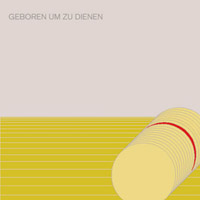 Although some might have called Tietchens’ United Dairies release, Formen Letzer Hausmusik, his first industrial release, this EG title, eighth in the reissue series, is truest to the form.
Although some might have called Tietchens’ United Dairies release, Formen Letzer Hausmusik, his first industrial release, this EG title, eighth in the reissue series, is truest to the form. Released in 1986, Geboren stuns in the same way early Esplendor tracks do, with blasts of chugging, caterwauling noise sounding straight from the factory floor. Tietchens’ most monotonously rhythmic work to date, it lacks the esoteric primitivism of earlier records or just severely limits the spaces in between, emphasizing speed in a defiant and less calculating way. Here is the artist realizing that his own devotion to excavated and mechanized sound, nourished by insular years of homespun synth modification and cyborg cocktail hour, is, for many others, a politicized vision, a voice of dissent and celebration.
Still, Tietchens remains an outsider, his tracks veering immediately from the stoic, resonant clang and noise surge of early Esplendor to imagine instead a smoky, confused planet of machinery, grinding fast towards the end of something or wailing inertly through the pauses, with barely, regrettably human voices full of pain and frenzy. Tietchens has stated the album’s (title: “Born To Serve”) inspiration from Cold War tensions at the time, and it’s not hard to feel the anguish in many of these subterranean plunges: a locomotive of flushing machine sounds sped past the point of their breaking and left to drag, drain and drivel, cut through with vocal shrieks and frail drones that feel new to the Tietchens lexicon. Strange that his most human-damning record to date is, to this extent, his most human in terms of allowing fragile or frayed elements more prominence.
The apocalyptic feel of the record is somewhat tempered by a remainder of spacey, Biotop-era sounds that feel, in this context, even more alienating and abusive, like a dance over graves, reeking of excess almost pornographic, and similarly leaving me feeling played-with. No Tietchens before this has ridden the ecstatic fringe or really reveled in anything but its own science, and I can appreciate Geboren’s accomplishment even if it does not feel as singular as the artist’s previous work. The three bonus tracks included with the Die Stadt reissue and recorded during the same period actually feel more like throw-backs to the Sky Records days anyway, so we’re reminded that Tietchens is a man of many changes and humors and much that Die Stadt is still holding back.
samples:
Read More
- Administrator
- Albums and Singles
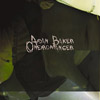 Emptiness is the primary influence guiding the sounds of this record. A tangible calm pierces each moment, lifting the music from the physical world and placing it firmly in the unreal. Aidan Baker's subject is dreams and it's remote, dream-like music he's producing on these two discs.
Emptiness is the primary influence guiding the sounds of this record. A tangible calm pierces each moment, lifting the music from the physical world and placing it firmly in the unreal. Aidan Baker's subject is dreams and it's remote, dream-like music he's producing on these two discs.
Die Stadt
It is worth mentioning right away that the music composing the album proper is wholly different from the live set provided on the second CD. The list of instruments used in the making of the five studio recordings is enough to prove this true: electric guitars, tapes, piano, drum machines, percussion, and vocals all make up Oneiromancer. The live disc, from his Toronto performance in April of 2004, lists electric guitar as the sole instrument. Where the first disc is all hazy moans and windy gusts of synthetic beauty, the live disc sounds far more rich, busy with music and manipulation, but retaining the hazy qualities from the album.
"Wake Up" betrays its name entirely, sounding more like the beginning of a dream rather than the cloudy and often frustrating moments of an early morning. All manner of recorded noise clamor along in the background while Baker generates warm, synthetic tones to draw away from the perhaps frightening nature of those sample noises moving along below. Death makes an appearance on the second song, but its presence there is rather obscured. The sounds of what could be a hospital often resonate out from Baker's cloud of synth, but there's very little context to place any of this in.
The problem with the album eventually makes itself evident in the way Baker chooses to organize all of his material. The first disc is essentially one long song utilizing the same arrangement: sampled loops and tape sounds played beneath a wash of warm tones and fuzzy feelings. It is relaxing, but not always engaging. "Do You Remember Me (From Your Dreams)" succeeds the most in getting my attention and holding it, but then again it isn't anywhere near as light or wandering as the previous two pieces. There are some light percussive parts littered throughout the disc, but their presence seems more like an afterthought, placed there to provide some current. In reality it cheapens the music and almost gives it a world-beat feel, as if I were listening to samples from the rain forest mixed with exotic drumming. It isn't all bad, but it barely stands up against Baker's other work.
The second disc, on the other hand, makes up for that stereotypical, perhaps underdeveloped music. Baker sounds more lively when given a single instrument to work with and the compositions, in turn, are far more vibrant. Instead of keeping a thematic of dreams running steady, Baker focuses more on the texture and severity of his sounds, mixing them and crossing them expertly. Small synthetic sounds (evidently from guitar) waver and flap through each piece. Being present for this live performance must've been nearly surreal: for 18 minutes Baker weaves plentiful rolls of sound together and keeps his work from being either cluttered or overbearing. Each of the songs blend into each other flawlessly, giving me the impression that the live disc is an album just as much as the first disc is. Baker fans will definitely want to pick this up for the live set and perhaps newcomers will find something here to love. While it isn't his best work, it may be one of his least challenging and, with the inclusion of the live set, one of his most diverse works.
samples:
Read More
- Administrator
- Albums and Singles
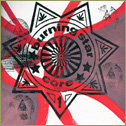 Those lucky enough to have witnessed Burning Star Core in solo form will expect more than just a single idea bled into 40 minutes. This release captures three different 2004 shows that give an excellent example of the styles that C Spencer Yeh can rip, both alone and as a team player. It never does any harm to get an all-star cast either.
Those lucky enough to have witnessed Burning Star Core in solo form will expect more than just a single idea bled into 40 minutes. This release captures three different 2004 shows that give an excellent example of the styles that C Spencer Yeh can rip, both alone and as a team player. It never does any harm to get an all-star cast either.
The restraint of the lineup on the opening piece has to be heard to be believed. Joined by two thirds of Hair Police (Trevor Tremaine and Robert Beatty) and noise merchant Mike Shiflet, this is not the expected blowout racket. Though it does reveal, especially to those who haven’t seen any live shows that Yeh is a far more energetic sounding player than his mild-mannered exterior would imply. The hardcore wall of whistling feedback and pitch-fucked swoons are soon revealed as sourced from his violin, not a ten strong gang of doom metallers. A rabble of free percussion buck shots punch through melodic riffs that seem to crack open as soon as they are birthed. The piece has a rising feel of a static lift off, focused electric power forcing the sounds into elevation.
"Two" is a duo piece with the aforementioned Beatty fights the closer for disc’s top slot. Fluttering violin and flickering film reel sounds reveal an instant interplay between the two players. This soon becomes gorgeously twisted up by DJ scratch-like high frequencies and metallic chiming sirens. After a brief lull comes a wall of dial manipulation and some painful throat work, Yeh sounds like a brutal cross between Mike Patton’s throat rips and Gonzo from the Muppets.
His solo closer is a voice, black box, and wires piece that rattles along in a sweetly sinister style. The handling of electronics here is astounding listening, and amongst his best works ever. The constant bed of clatter, like the rattle of an underground drain, is a slowly warmed through murk that’s driven by propulsive drifts of synth sound. At times it seems like a static organ part floats over piece, levering departed souls up and out of the music. This is at times before glorious and chilling, making the 14-and-a-half minute ride totally transfixing. 2004 appears to have been a very good year for Burning Star Core.
samples:
 
Read More
- Administrator
- Albums and Singles
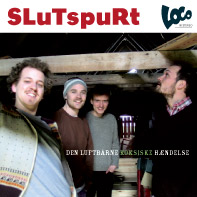 All the bands and side projects in the yoyo oyoy collective—including Fjernsyn Fjernsyn, Blob Back Farenheit and Kirsten Ketsjer: The Rock Band—contain one or more of Slütspürt's members. This brilliant EP on Ninth World Music demonstrates a fierce improvisation associated with sometime labelmates Evan Parker and Peter Brötzmann, all-too-fleeting echoes of 1979 Manchester/Cleveland, and a brief prettiness that could hide in plain sight on the Songs of Green Pheasant record.
All the bands and side projects in the yoyo oyoy collective—including Fjernsyn Fjernsyn, Blob Back Farenheit and Kirsten Ketsjer: The Rock Band—contain one or more of Slütspürt's members. This brilliant EP on Ninth World Music demonstrates a fierce improvisation associated with sometime labelmates Evan Parker and Peter Brötzmann, all-too-fleeting echoes of 1979 Manchester/Cleveland, and a brief prettiness that could hide in plain sight on the Songs of Green Pheasant record.Den Luftbårne Koksiske Hændelse works as five separate tracks but is even better as a seamless piece. There is a breadth of instrumentation and a concentrated feeling for contrast and flow, achieved by (I think) guitar, power tools, drums, reeds, strangled strings and perhaps very restrained laptoppery. The result is drone, noise, feedback, repaired folk, rabid jazz, a wintery ambience, and one almost perfect electro-metallic garage freakout. As if emulating desperate attempts to prevent an ice-covered aircraft skidding from runway to crowded pre-school "Tai-ai hey back off chief" is a grating, attention grabber which bleeds into the marvelously controlled "Jørgen, Søeren og Magrethe" a throbbing, yelping, gliding, ghostly Nordic relative of Pere Ubu and Joy Division.
Next, "Jesuspiben" uses unknown (perhaps) bowed and blown instruments to conjure a sacrificial rural sensibility at which Woven Hand appear to have been aiming. This gives way to a calmingly intense out-jazz, before slowly mutating into the beautiful “Guldfisk” which emerges as sneakily as an unreliable narrator yet hangs around long enough to please those of us who will always mourn the passing of John Fahey.
Finally, “Et Nul For Meget” takes clocks, chimes, synths, bells, reeds and unknown percussive objects to a place where Texan composer Jerry Hunt could guide a listener. Slütspürt may be in Berlin or could have relocated back to Copenhagen. Their name actually means something crushingly dull, but in English affords the same brief sniggering enjoyed when signposts for Wank, Germany or candy bar ads for Spunk were first glimpsed. Den Luftbårne Koksiske Hændelse contains a lot more invention and pleasure than most bands manage in their unfailing attempts to fill every last bit of nearly 80 minutes of disc space.
samples:
Read More

